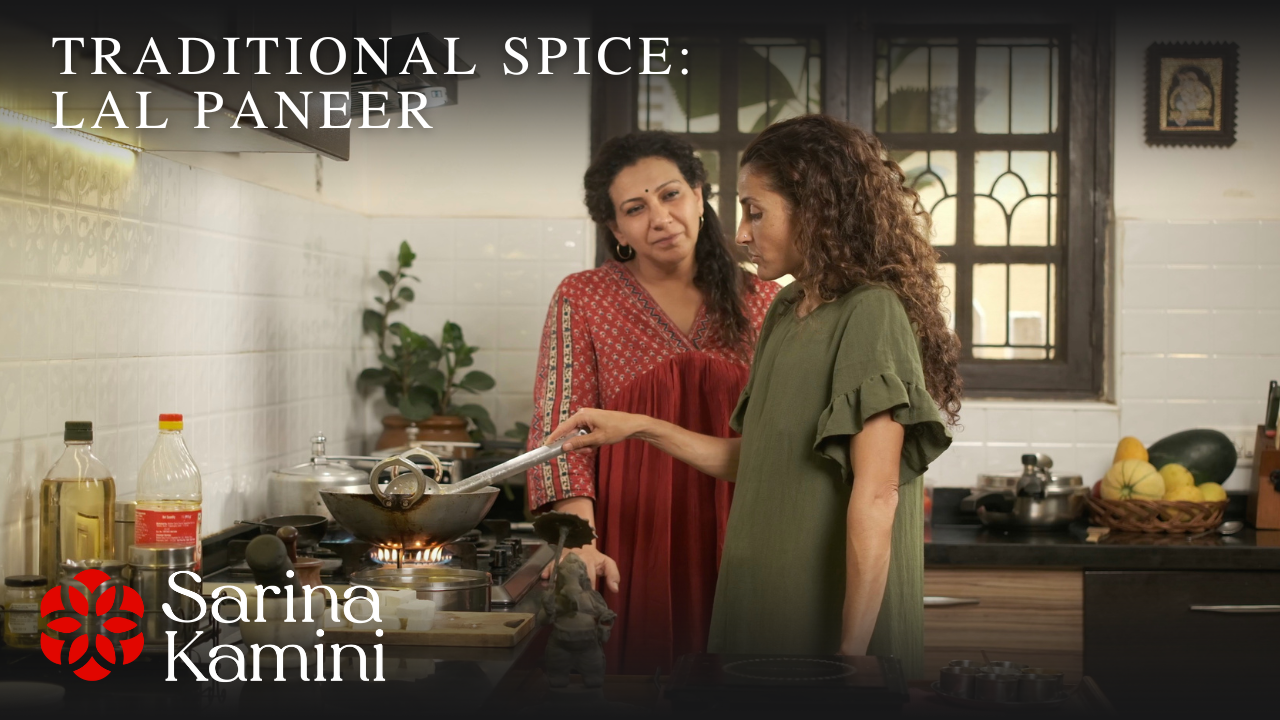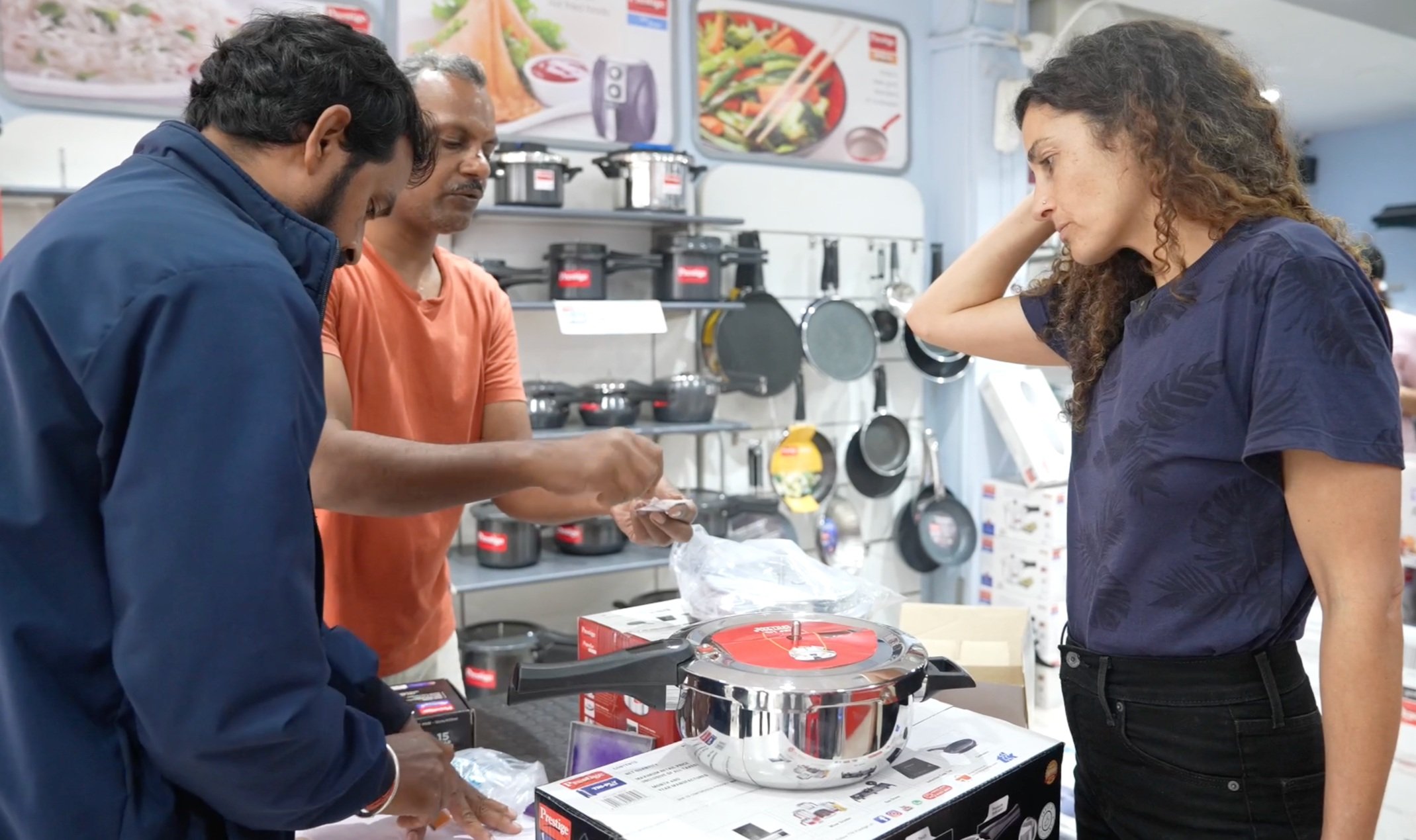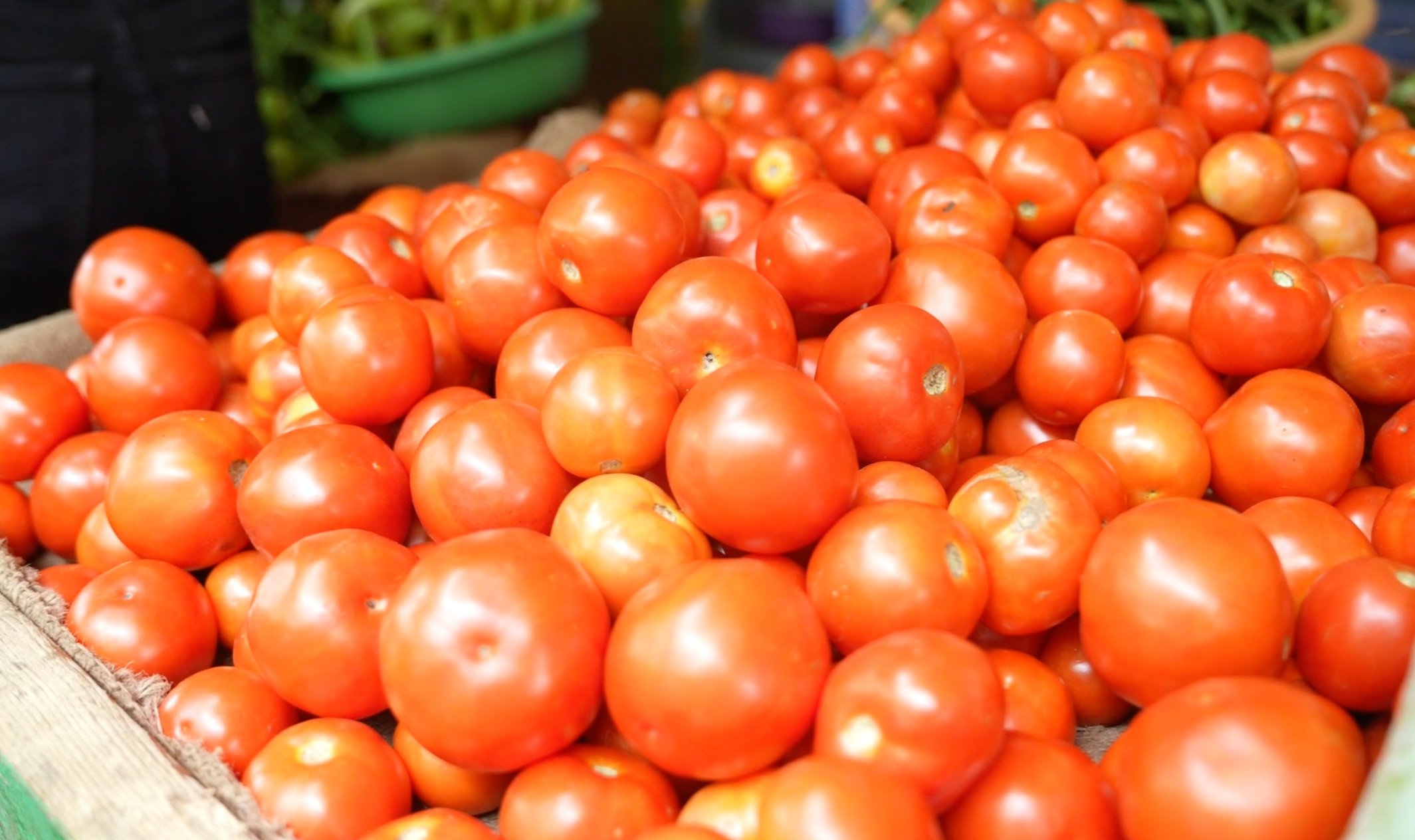KASHMIRI LAL PANEER
KASHMIRI LAL PANEER

KASHMIRI LAL PANEER IS SOFT, DELICIOUS AND NOURISHING.
Kashmiri lal paneer recipe is nourishing, softly spiced, and a healthy meat-free dinner. Make this paneer recipe at home by following our video recipe. And for more tips on how to cook with paneer, or how to make dairy-free paneer substitutions for vegan eaters or lactose intolerant eaters, see more via the link on learning about paneer at home.
Learn more about how to make paneer at home >
RECIPE DETAILS
Serves: 4 as part of an Indian meal.
Cooking time: 45 minutes.
Dietary Style: Gluten Free. Vegetarian.
INGREDIENTS
- 2 cups mustard oil
- 1/2 tsp turmeric powder
- 1/2 tsp fine white salt
- 500 grams fresh paneer
- 6 small tomatoes
- 1 tbsp mustard oil
- 1 tsp Kashmiri chilli powder
- 1/2 tsp cumin seed
- 2 tsp coriander powder
- 1 tsp ginger powder
- 2 tsp fennel powder
- 1/2 cup paneer water
- 2 tsp fine white sea salt
- third of a cinnamon quill
- 4 green cardamom pods, cracked
METHOD
How to make our Kashmiri lal paneer recipe.
STEP 1
Start by heating the two cups of mustard oil in a heavy wok, cast iron kadai, or a deep, heavy bottomed pot on the stove. Heat it to smoking point.
While the mustard oil is heating, cube the paneer into one inch thick, two inch long cubes. Fill a bowl with water and keep it beside the stovetop: the paneer goes into the water once fried.
STEP 2
Once the mustard oil is hot, add a half teaspoon each of white salt and turmeric powder to the oil. This will prevent the paneer from sticking to the kadai. Now you’re ready to fry the paneer in small batches—you want the oil to be very hot so that the paneer browns quickly. This process really is about creating a browned barrier around the outside of the paneer so that it holds together during the cooking process. The frying also adds another element of caramelised flavour to the paneer. Remove the fried paneer from the oil with a slotted spoon and place carefully into the water. This step keeps this paneer soft and also removes the excess oil.
STEP 3
Before beginning the masala, prep your tomatoes. Either core and snick the base and place in boiling water to skin—watch this video if you’re unsure. Or make like Shivani does in this recipe and pop them in a pressure cooker with a little water until the pressure releases once, then release from the pressure cooker, drain, cool and skin.
Take your skinned and cooked tomatoes and puree in a food processor. The smooth texture of the tomatoes is important—it creates this very silken and rich feel in the end result.
STEP 4
In a medium pot, heat around 1 tablespoon of mustard oil on high heat. Add the teaspoon of Kashmiri chilli powder and stir through for two to three minutes, keeping the heat high. Don’t skip that step—it’s important to properly tempter the chilli. Next add the pureed tomatoes and stir through on continued high heat for another two to three minutes.
STEP 5
Once this process is complete, lower the heat to a low medium. Add the cumin seed, coriander powder, ginger powder and fennel powder. Stir through for a minute or two before adding back the fried paneer and a half cup of the water in which the paneer was strained. Add the salt and then stir through and continue to cook on a medium low heat.
STEP 6
Lastly, add the cinnamon quill and cracked green cardamom pods and stir through. Keep on a low simmer for 10 or so more minutes and then it’s ready to serve.
LEARN MORE ABOUT
MAKING PANEER AT HOME
Can you make paneer at home?
Yes. Paneer is easy to make at home. Follow this recipe for detailed instructions. Paneer is made using milk, lemons and the option of yogurt or fresh curd, though the last is not essential.
What is paneer?
Paneer is a milk product. It is a soft cheese that it is used across the regions of India to make delicious vegetarian curries. Easy to cook, paneer is often served in Indian restaurants as palak paneer. In traditional regional Indian homes, there are many variations of this staple dish.
Is paneer hard to make?
Paneer isn’t hard to make but it does take a little bit of time. Once the milk is boiled, split, and strained, it should be hung or compressed for at least a few hours or overnight so that it doesn’t break apart when frying.
What can you use if you can’t make paneer?
Tofu can be used as a replacement for paneer in all of the paneer recipes across my website and YouTube channel. Frying the tofu before spicing will help to replicate the texture of Kashmiri paneer further.



